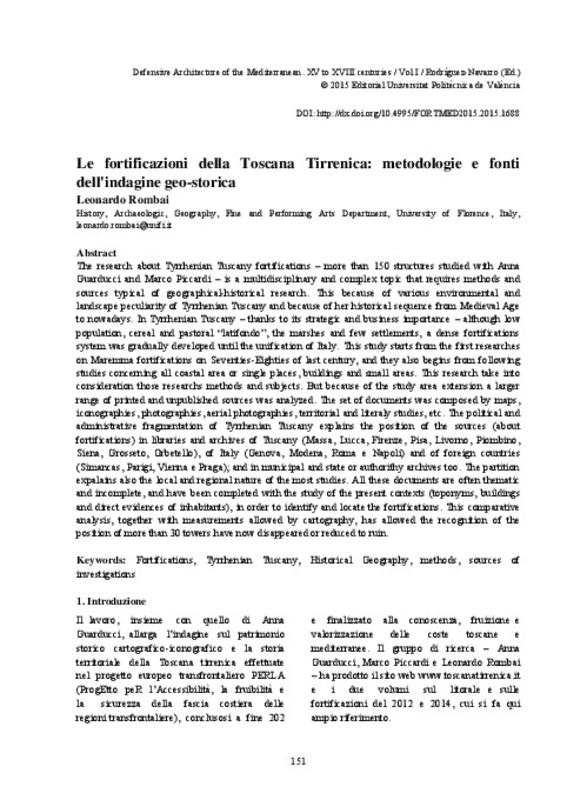JavaScript is disabled for your browser. Some features of this site may not work without it.
Buscar en RiuNet
Listar
Mi cuenta
Estadísticas
Ayuda RiuNet
Admin. UPV
Le fortificazioni della Toscana Tirrenica: metodologie e fonti dell'indagine geo-storica
Mostrar el registro completo del ítem
Rombai, L. (2015). Le fortificazioni della Toscana Tirrenica: metodologie e fonti dell'indagine geo-storica. En Defensive architecture of the mediterranean: XV to XVIII centuries. Vol. I. Editorial Universitat Politècnica de València. 151-158. https://doi.org/10.4995/FORTMED2015.2015.1688
Por favor, use este identificador para citar o enlazar este ítem: http://hdl.handle.net/10251/94963
Ficheros en el ítem
Metadatos del ítem
| Título: | Le fortificazioni della Toscana Tirrenica: metodologie e fonti dell'indagine geo-storica | |
| Autor: | Rombai, Leonardo | |
| Fecha difusión: |
|
|
| Resumen: |
[EN] The research about Tyrrhenian Tuscany fortifications – more than 150 structures studied with Anna
Guarducci and Marco Piccardi – is a multidisciplinary and complex topic that requires methods and
sources typical of ...[+]
|
|
| Palabras clave: |
|
|
| Derechos de uso: | Reconocimiento - No comercial - Sin obra derivada (by-nc-nd) | |
| ISBN: |
|
|
| Fuente: |
|
|
| DOI: |
|
|
| Editorial: |
|
|
| Versión del editor: | http://ocs.editorial.upv.es/index.php/FORTMED/FORTMED2015/paper/view/1688 | |
| Título del congreso: |
|
|
| Lugar del congreso: |
|
|
| Fecha congreso: |
|
|
| Tipo: |
|








